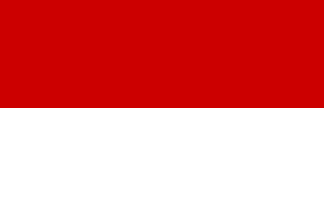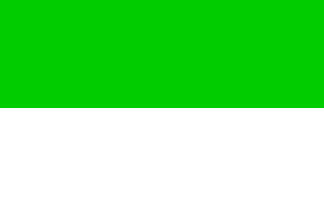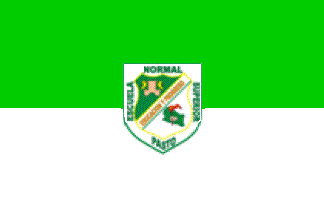 klaus-michael schneider
klaus-michael schneider
Keywords: education |
Links: FOTW homepage | search | disclaimer and copyright | write us | mirrors

FOTW beschäftigt sich mit der Wissenschaft der Vexillologie (Flaggenkunde).
Alle auf dieser Website dargebotenen Abbildungen dienen ausschließlich der Informationsvermittlung im Sinne der Flaggenkunde.
Wir distanziert uns ausdrücklich von allen hierauf dargestellten Symbolen verfassungsfeindlicher Organisationen.
Last modified: 2021-05-22 by  klaus-michael schneider
klaus-michael schneider
Keywords: education |
Links: FOTW homepage |
search |
disclaimer and copyright |
write us |
mirrors
![[Flag of Colombia]](../images/c/co.gif) (2:3)
(2:3)  image by Željko Heimer, 20 May 2001
image by Željko Heimer, 20 May 2001
See Also:
 image by Ivan Sache, 13 September 2014
image by Ivan Sache, 13 September 2014
Institución Educativa Panamericano Puente Boyacá was established in the
village of Puente de Boyacá, part of the municipality of Ventaquemada (Boyacá
Department) by Resolution No. 2,006 of 21 October 2008.
The flag of the institute is green with a red disk in the middle, outlined in
golden yellow and charged with a black representation of the Bridge of Boyacá.
Source:
http://instpanamericano.blogspot.fr/p/bandera-y-escudo.html - Institute's
website
The Bridge of Boyacá (Puente de Boyacá) is part of the Park of Boyacá, a
National Cultural Heritage site that commemorates the Battle of Boyacá, won on 7
August 1819 over the Royalist troops. The bridge, erected in the early 18th
century, was proclaimed a National Monument of the Independence in 1920.
Source:
http://www.absolut-colombia.com/campo-de-boyaca-escenario-de-la-inolvidable-batalla-de-boyaca/
Ivan Sache, 13 September 2014
 image by Ivan Sache, 20 November 2014
image by Ivan Sache, 20 November 2014
Colegio Cooperativo was established in January 1976 in Panqueba (Boyacá
Department) by the priest José Antonio Romero Mojica. The school was renamed
Colegio Departamental Mixto by Decree No. 645 of 23 August 1976, Colegio
Nacionalizado de Panqueba by Agreement No. 69 of 5 August 1986, and Colegio de
Educación Basica y Media Técnica de Panqueba by Resolution No. 2,016 of 22 July
1999. Colegio de Educación Preescolar, Basica y Media Técnica de Panqueba was
established by Resolution No. 1,664 of 11 July 2002, as the merger of the
Colegio and of Concentración Urbana. Institución Educativa Técnica de Panqueba
was eventually established by Resolution No. 47 of 16 January 2009 as the merger
of the Colegio and of several Escuelas Rurales.
The flag of the institute is described in Chapter 2, Article 6 of the
institute's Etiquette Guidebook as plain emerald green, meaning hope, economy,
agriculture and cattle-breeding. Adopted in September 1979, the flag was
designed by Aurelia Maldonado de Russi. Authorship is credited to the priest
José A. Romeroy - director of the school - and to the teachers María Antonia
Calerón, Dora Sofía Leal and Aurelia Maldonado.
Source:
http://colpanqueba.jimdo.com/manual-de-convivencia/ - Institute's website
Ivan Sache, 20 November 2014
 image by Ivan Sache, 10 January 2021
image by Ivan Sache, 10 January 2021
Institución Educativa Panebianco Americano is located in Candelaría (Valle
del Cauca). The school is composed of four seats: Atanasio Girardot, José María
Córdoba, Santa Rita de Cassia and Enrique Olaya Herrera.
The symbols of
IE Panebianco Americano were designed by Yanet Gónima.
The flag is
horizontally divided green-white-yellow with the school's coat of arms in the
center.
Green represents sugarcane, the fertile fruit of the municipality's
soil.
White represents peace and love.
Yellow represents the resources
obtained through the community's progress and surpassing.
The shield is
surmounted by a scroll inscribed "Trabajamos con amor y educamos para la paz",
"We work with love and we educate for peace". In the center are featured hands
meaning teamwork, the river that borders the four seats of the school, and
sugarcane as the product of the municipality's agriculture.
http://iepa.edu.co/index.php/simbolos
School website
Ivan Sache, 10 January 2021
 image by Ivan Sache, 13 December 2014
image by Ivan Sache, 13 December 2014
Institución Educativa Técnica Papagalá was established in 1932 in Papagalá
(municipality of Saldaña, Tolima Department), as Escuela Rural Mixta Papagalá.
The sole teacher, Atanias Réinales, taught some 20 pupils in a palm-roofed hut
offered by Miguel Hernández Pinto. Colegio Papagalá was established in 1982, as
a secondary seat of Colegio Roberto Leiva. Institución Educativa Técnica
Papagalá was eventually established by Resolution No. 1,213 of 3 October 2002 as
the merger of Instituto Técnico Comercial Papagalá, Escuela Rural Mixta Papagalá
Cucharo and Escuela Rural Mixta El Redil.
The flag of the institute is horizontally divided wine red-white. Wine red is a
symbol of Tolima Department, as a colour of its flag. White is a symbol of
peace.
Source:
http://papagala.tripod.com/CONOZCANOS.htm#S%CDMBOLOS_INSTITUCIONALES -
Institute's website
Ivan Sache, 13 December 2014
"The Instituto Técnico Industrial Pascual Bravo (English: Technical
Institution Pascual Bravo) was established by Ordenanza No. 37 of 1935, by the
Assembly of the Department of Antioquia as "Escuela de Artes y Oficios"
(English: School of Arts and Crafts), as an Annex of the Universidad de
Antioquia. In 1938 it was reorganized into an industrial institution, and
became an independent entity, as a public school, changing its name to its
current form. The year 1938 is generally accepted as the foundation of the
school. It is closely related to the I.U. Pascual Bravo because they both have
the same foundation date and name and are complimentary institutions as well"
Sources:
http://www.tecnicopascualbravo.edu.co/index2.php?id=5749&idmenutipo=1121&tag=,
http://master2000.net/recursos/fotos/284/resena_historica.pdf, and
https://es.wikipedia.org/wiki/Instituto_T%C3%A9cnico_Industrial_Pascual_Bravo
The flag is, as seen here (second flag from left to right):
https://scontent.feoh4-2.fna.fbcdn.net/ (source:
https://www.facebook.com)
For additional information go to Técnico
Pascual Bravo (official website):
http://www.tecnicopascualbravo.edu.co
Esteban Rivera, 13 August 2018
"The I.U. (Institución Universitaria) Pascual Bravo (English: University
Institution Pascual Bravo) was established by Ordenanza No. 37 of July 24, 1935,
by the Assembly of the Department of Antioquia as "Escuela de Artes y Oficios"
(School), as an Annex of the Universidad de
Antioquia. In 1938, by Ordenanza No. 56, of July 4, 1938, its name is
changed to "Escuela de Artes y Oficios Pascual Bravo" (English: Pascual Bravo
School of Arts and Crafts). By
Decreto No. 108 of 1950, Congress modifies its name to "Instituto Técnico
Superior Pascual Bravo" (English: Higher Technical Institute Pascual Bravo).
By Law 52, of 1982 Congress again reorganizes the institution and it is
renamed "Instituto Tecnológico Pascual Bravo" (English: Technological
Institute Pascual Bravo) and grants full autonomy. Finally, by Resolución No.
1237 of the Ministry of Education of March 16, 2007, it is transformed into a
University Institution.
The year 1938 is generally accepted as the
foundation of the school. It is closely related to the I.U. Pascual Bravo
because they both have the same foundation date and name and are
complimentary institutions as well."
Sources:
http://www.pascualbravo.edu.co/pdf/normograma/acuerdos/2017/acuerdo-015-estatuto-general.pdf,
http://www.pascualbravo.edu.co/index.php/lainstitucion/quienes-somos/historia
and https://es.wikipedia.org/wiki/Pascual_Bravo_(desambiguaci%C3%B3n)
The
flag is horizontal with five horizontal stripes, equal in size, three blue
and two white, starting (from top to bottom) with blue, and
the
Coat of Arms ® in the middle, as seen here:
http://www.pascualbravo.edu.co/images/lainstitucion/simbolos/bandera.jpg
(source:
http://www.pascualbravo.edu.co/index.php/lainstitucion/quienes-somos/simbolosinstitucionales). On the lower blue stripe, close to the hoist, in a vertical manner, it has
the inscription "Vigilada Mineducación" (English: Monitored by (the)
MinEducación (abbreviation for Ministry of Education)".
The following
information is from their "Manual de Identidad Visual"
(English: Visual Identity Manual):
The coat of arms colors are:
CMYK
Blue: C = 100 M= 74 Y = 42 K= 55
White: C
= 0 M= 0 Y = 0 K= 0
RGB
Blue: R = 0 G = 31 B = 55
White: R = 255 G =
255 B = 255
Pantone
Blue: 7463EC
White: N.D.
The font types to
be used are: Bebas Neue, Helvetica Neue LT Com 47 Light Condensed, Helvetica Neue LT Com 77 Bold Condensed, Arial Narrow, Nightingale and Wilderness
Typeface.
The description of the coat of arms (translated from the original, in
Spanish): "The torch above indicates the more knowledgeable, the wiser. The middle of the Coat of Arms is a book, representing the mission of the
Institution to safeguard knowledge. The Coat of Arms is complemented by
a circumference that welcomes all elements, including the name and year of
foundation, and seeks to represent universal concept of knowledge.
(A)
Cogwheel, which refers to the Technological formation of the Institution.
Registro
de la Marca Comercial Institución Universitaria Pascual Bravo 1938 (mixta).
Para distinguir servicios comprendidos en la
educación, formación, servicios
de entretenimiento, actividades deportivas y culturales.
(®) Registered
trademark
"Vigilada Mineducación (English: Monitored by (the) MinEducación
(abbreviation for Ministry of Education). It has to be visible as
mandatory
by Resolución No. 12220 of 2016 by the Ministry of Education.
For
additional information go to Pascual Bravo (official website):
http://www.pascualbravo.edu.co
Esteban Rivera, 13 August 2018
 image by Ivan Sache, 29 October 2014
image by Ivan Sache, 29 October 2014
 image by Ivan Sache, 29 October 2014
image by Ivan Sache, 29 October 2014
Escuela Normal de institutores de Nariño was established in Pasto (Nariño
Department) by Law No. 7 of 6 September 1911. Classes started on 23 November
1911. The institute was renamed Escuela Normal de Occidente in 1935. Subsequent
names of the institute were Escuela Normal Superior de Varones, Escuela Normal
Nacional, and, eventually, Institución Educativa Municipal Escuela Normal
Superior de Pasto.
The flag of the institute is presented in the Institutional Education Project as
horizontally divided white-green. Green represents hope, as well as the woods
and gardens located in the premises of the institute. White is a symbol of
tranquility, harmony, and peace.
Source:
http://www.escuelanormalpasto.edu.co/documentos/05pei.pdf - Institute's
website
However, the flag in actual use is horizontally divided green-white.
Photos:
http://www.escuelanormalpasto.edu.co/images/stories/inter02/HPIM9928.JPG
http://www.escuelanormalpasto.edu.co/images/stories/inter02/HPIM9929.JPG
The flag appears to be used also with the institute's emblem in the middle.
Photo:
http://www.escuelanormalpasto.edu.co/images/stories/egresados/IMG_9557.JPG
http://www.escuelanormalpasto.edu.co/images/stories/egresados/IMG_9780.JPG
The emblem of the institute is presented in the Institutional Education Project
as charged with traditional elements. The lower right part alludes to Nariño
Department illuminated by the torch of knowledge. The upper left part is charged
with a castle, a symbol of the greatness of the inhabitants of Nariño,
surrounded by two lions symbolizing the authority and the force of people
struggling for education. The central part is inscribed with the institute's
motto "EDUCACION Y PROGRESO" (Education and Progress).
Ivan Sache, 29 October 2014
Institución Educativa Municipal Técnico Industrial de Pasto was established
in 1950 in Pasto (Nariño Department), succeeding Escuela Industrial Francisco de
Paula Santander. The institute was managed from 1952 to 1972 by the Salesians of
Don Bosco. Then state-managed, the institute was renamed Instituto Técnico
Superior Industrial Nacional de Pasto. The institute adopted its current name in
2004, after its management had been transferred to the municipality of Pasto.
The flag of the institute is diagonally divided green-white per bend
sinister, with the institute's emblem in the middle. Green is a symbol of
freshness, tranquility and hope. White is a symbol of purity, innocence and
peace.
The emblem of the institute features:
- a lightning,
representing electricity, among the oldest specialties taught at the institute;
- a cogwheel, representing industrial mechanics;
- a square and a rectangle,
representing industrial design and wood industry;
- a computer mouse,
representing computer science, the most recent specialty taught at the
institute;
- a book, as the highest symbol of academics and knowledge.
All
these elements are inscribed within a circle symbolizing integration.
http://tecnicoindustrialpasto.edu.co/index.php/institucion/simbolos-institucionales
- Institute's website
Ivan Sache, 12 July 2014
 image by Ivan Sache, 08 July 2011
image by Ivan Sache, 08 July 2011
"Colegio Patios Centro Uno" is located in Los Patios (Norte de Santander
Department).
The flag of the institute, as shown (photo) on the institute's website, is
horizontally divided white-red.
Source:
http://tania-patios.blogspot.com/2010/04/simbolos-patrios.html
Ivan Sache, 08 July 2011
 image by Ivan Sache, 09 July 2011
image by Ivan Sache, 09 July 2011
"Liceo Patria" was founded on 15 April 1967 in Barrio San Alfonso,
Bucaramanga (Santander Department) by General Álvaro Valencia Tovar, as "Quinta
Brigada", based in dependencies of the Ricaurte Battalion. In 1970 General
Álvaro Camacho Leiva moved the college to its today's location and renamed it "Liceo
Patria Quinta Brigada". On 28 April 2008, the college was renamed "Institución
Educativa Liceo Patria" by Municipal Decree No. 1,699.
The flag of the institute is shown graphically on the institute's website as
horizontally divided white-red. White symbolizes peace, red symbolizes courage
and love.
Source:
http://liceopatria.org/S%C3%ADmbolos.php
Ivan Sache, 09 July 2011
 image by Ivan Sache, 17 September 2014
image by Ivan Sache, 17 September 2014
Institución Educativa Paul VI was established in Palmira (Valle Department)
by Resolution No. 1,781 of 4 September 2002, as the merger of Centro Docente No.
82 Paulo VI (est. on 16 October 1968), Centro Docente No. 98 José María Calvache,
Centro Docente No. 101 Popular Modelo, and Centro Docente No. 107 Luis Fernando
Vallejo. The name of the institute recalls the Apostolic Pilgrimage (official
visit) of Pope Paul VI to Bogotá, 21-25 August 1968.
The symbols of the institute, designed by Hugo Ferney Rodriguez in 1983, for the
celebration of the 15th anniversary of the foundation of the institute, are
prescribed in Article 7 of the institute's Etiquette Guidebook.
The flag is divided white-yellow by a red diagonal stripe, per bend sinister.
White and yellow are the papal colours. Red recalls the cloak of the Pope and of
the cardinals.
Source:
http://www.calameo.com/read/000735823835d07b7d482
Photos:
https://plus.google.com/photos/106852332323370992619/albums/5662020592603114657/5662020817191679394?banner=pwa
https://plus.google.com/photos/106852332323370992619/albums/5662020592603114657/5662020920033451026?banner=pwa
https://plus.google.com/photos/106852332323370992619/albums/5662020592603114657/5662024058582465538?banner=pwa
Ivan Sache, 17 September 2014
 image by Ivan Sache, 13 May 2021
image by Ivan Sache, 13 May 2021
Institución Educativa Paz y Esperanza was established in April 2019 in borough Ciudadela Torrentes, Soacha (Cundinamarca).
The flag of IP Paz y Esperanza is horizontally divided white-green, white for peace ("paz") an green for hope ("esperanza"). The two colors are arranged in horizontal stripes of equal size, emphasizing the balance between these two spiritual factors.
Source: school website
Ivan Sache, 13 May 2021
Hosted by: Fanshop-Online.de und Handy-Shop.de
Tipp: Apple iPhone 12 im Shop